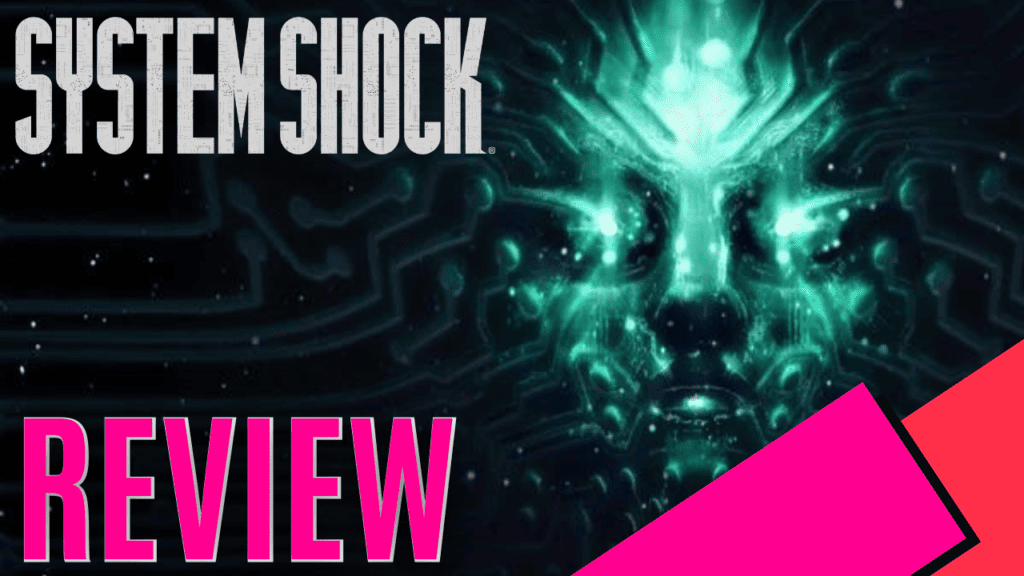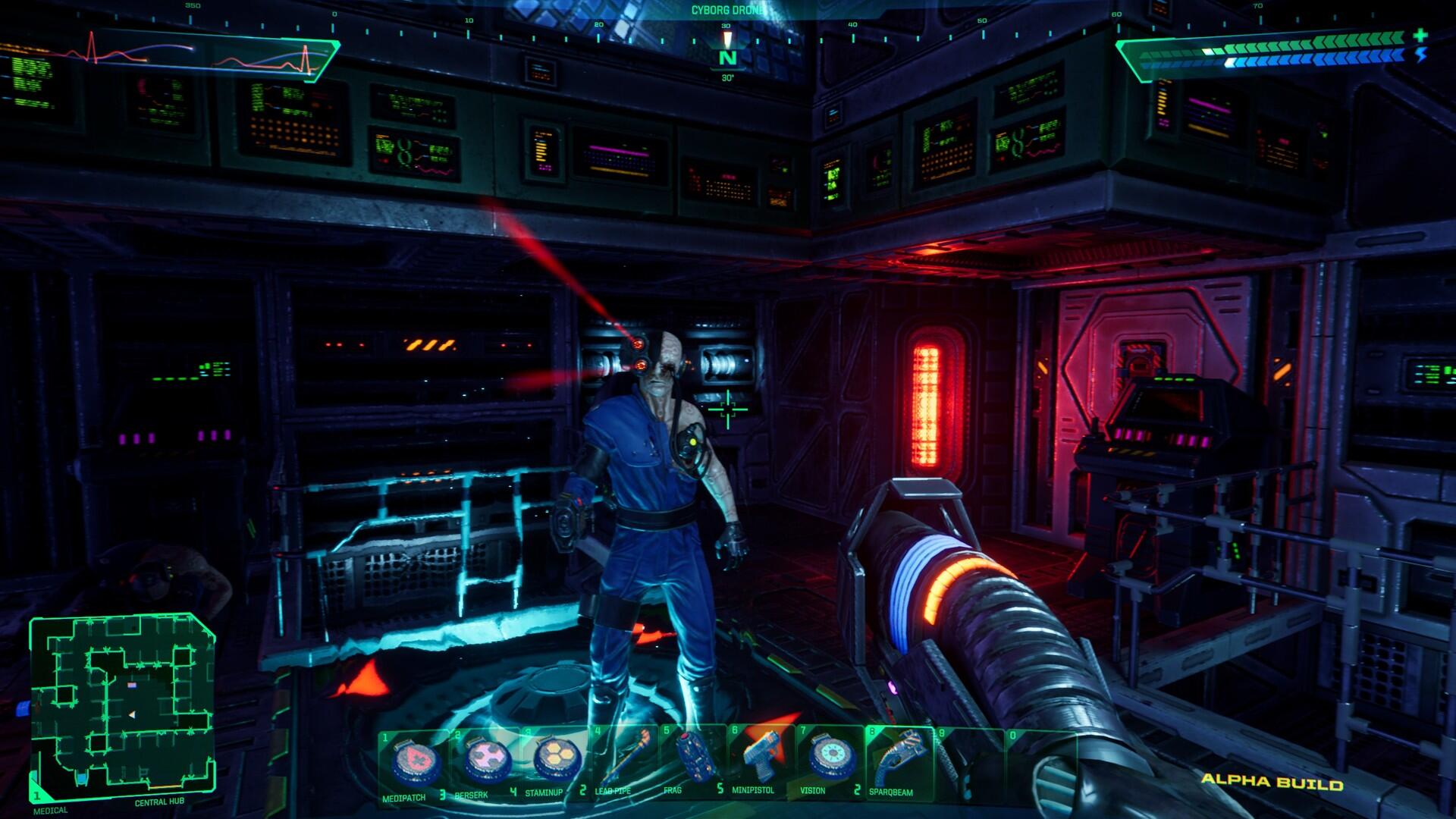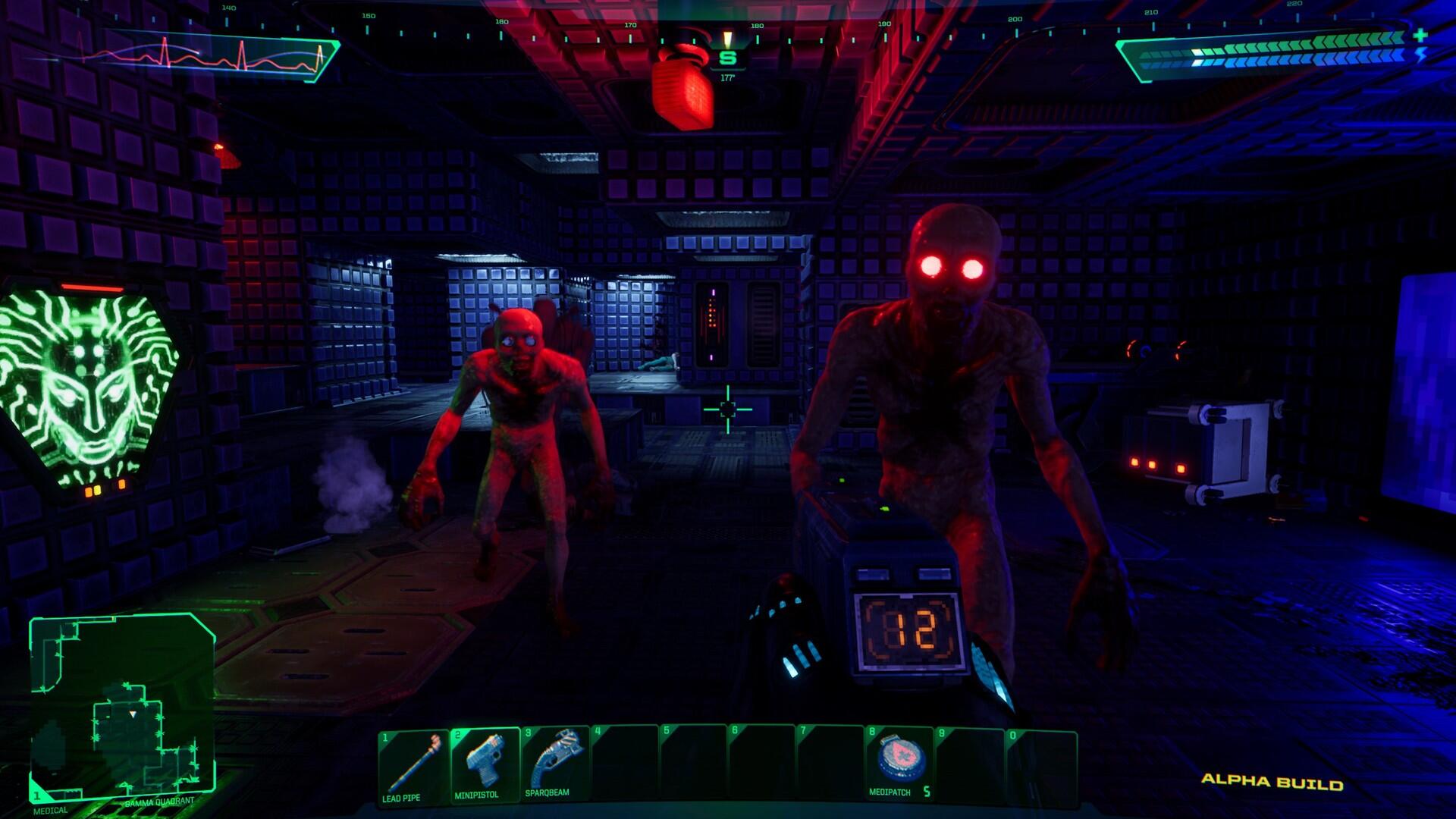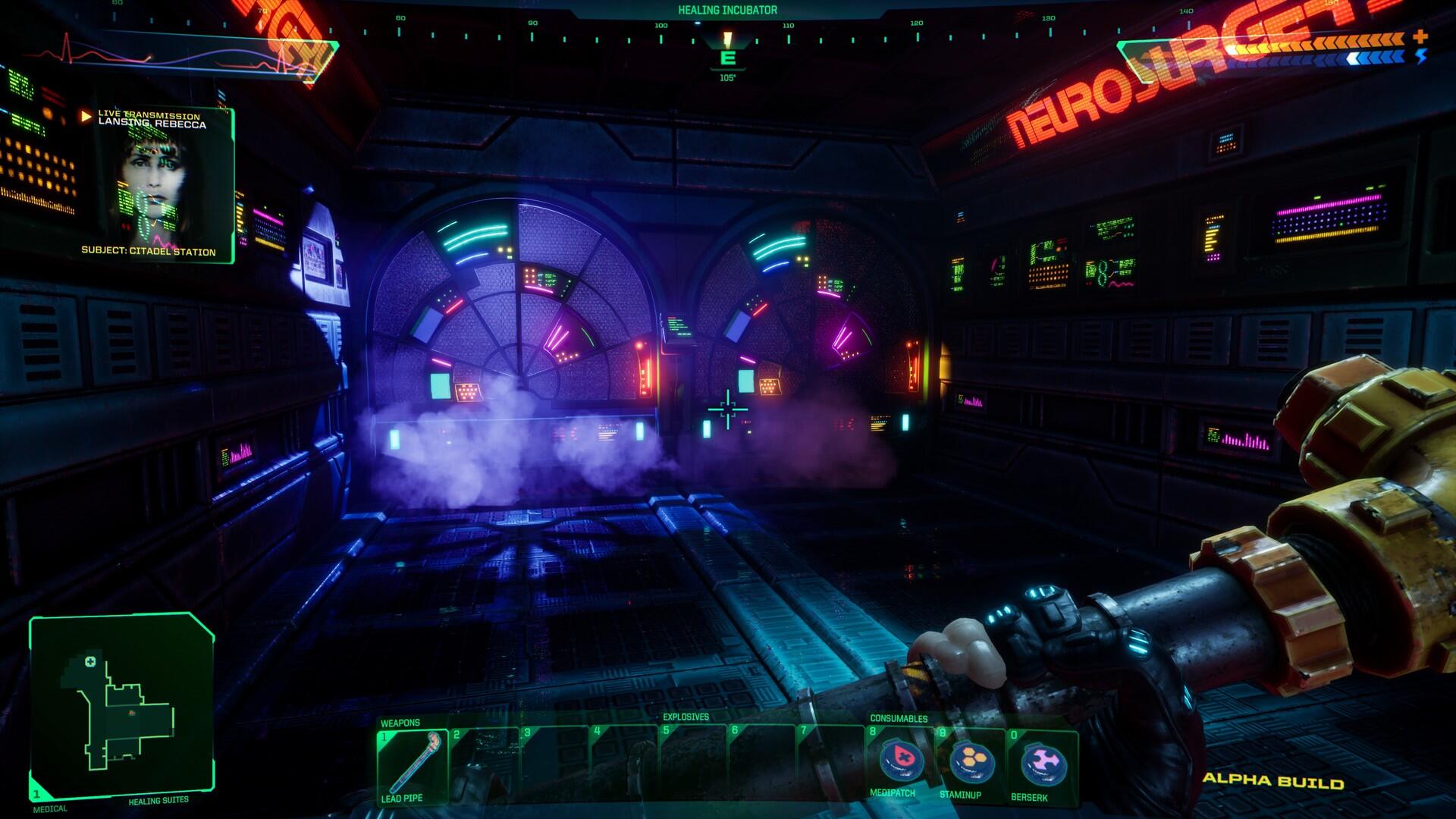
Just short of 30 years ago, System Shock, a first-person horror action-adventure from 1994, gave us a glimpse into the future of gaming. The sci-fi cult classic is said to be a pioneer of immersive 3D gameplay and storytelling. Here we are, all the way in the distant future of 2023 and System Shock is back with quite a few visual and gameplay upgrades.
System Shock Remake is brought to us by Nightdive Studios, and this isn’t their first foray into the universe. Back in 2018, they released System Shock: Enhanced Edition, their version of the original Looking Glass Studios title, which at the time was one small step with updated retro-style graphics and textures. It was great a few years back, but it was more a throwback than a new gameplay experience. Fast-forward to 2023 and after a lengthy Kickstarter development, they’ve taken the old and made it new AGAIN, this time with a straight-up remake in Unreal Engine to meet today’s ultimate technological capabilities. Nightdive Studios didn’t seek to alter the original game massively, rather, enhance it to suit the new age of gaming while being a faithful remake. It’s the same story and base gameplay in a shiny new package.
The year is 2072. An anonymous hacker attempts to steal a military-grade augment from TriOptimum Corporation and manages to get himself caught. In a really strong opening through the perspective of a drone, we get a full view of a rainy, neon cyberpunk city – think Bladerunner. A thumping, banger track plays all the while travelling toward Citadel Station – the base where we’ll be spending our time.
From his perspective, we’re thrown behind a desk, all while shady Vice President Edward Diego cuts a deal. Co-operate and the sought-after cybernetics are yours. Your objective: bypass the ethics system for the all-seeing AI of the city, SHODAN. After a successful job, the cybernetics are installed into the hacker, and we’re thrown into a medically induced coma for several months, only to wake to a space station filled with dismembered corpses, mutated crew members, and a rampant AI hell-bent on destroying humanity.

Starting in the Medical wing, the hacker gets geared up and uses nifty new tech chips to build up a swanky HUD to aid our journey. For veterans of System Shock, there’s a much cleaner user interface to look forward to, which was notoriously bad back in the day. It proves much better for first-person shooting and a full range of vision.
Cutscenes are stunning and most in-game animations emulate whatever sci-fi object or creature they’re replicating. The feel of an abandoned space station hits hard, and compared to the original, the graphics are leaps and bounds ahead, being much more atmospheric, with dark tones contrasted with really effective shadows and lighting. Most elements are super modern, but on closer inspection, there are some low-resolution and sometimes pixelated details on many surfaces. I haven’t quite made up my mind about how I feel about it – the inconsistencies make it feel more like a mid-2000s game rather than a loving 90s throwback or a current title. It’s not the be-all and end-all, but it threw me off decoding why they chose this route rather than one or the other.
Exploration is a huge part of the gig and the multi-level station is huge. The level design was kept mostly the same, so returning fans should get a kick out of layout familiarity, but there has been a reduction of unnecessary spaces. It boasts a non-linear style of gameplay with a slight sprinkling of puzzles, but the still excessive amount of corridors actually broke some immersion for me, given there isn’t much in those spaces and little pay-off. The map and visual cues were there but there was no hand-holding – we were alone and left to scour every nook and cranny of this terrifying labyrinth. It’s all in exploration, but often it left me with no idea of how to advance and a lot of wasted time searching down dead-ends. If we want to uncover what happened, we’ll need to find data and audio logs throughout and this tends to be the singular reason for these rooms.
We aren’t completely alone. Along the way, mutated crew members and cyborgs will be searching for us. Luckily, we have a handy melee pipe and a decent collection of guns, ammo types, and grenades to take them all down. Controls are modernised with keyboard and controller options that match the typical layout of first-person shooters. While they are serviceable, combat feels clunky and I could’ve used a good block or dodge to stand a fighting chance. What I really appreciated was the buffing dermal patches, which were carried over from the original game, like the Mind-Enhancer, which aids in puzzle solving but inverts controls. That took me back to those clever 90s mechanics that messed with the player’s minds.

Puzzles are mostly unintuitive, I had to keep toggling switches until something clicked, and sometimes it was hard to tell what triggered by completing them. For further access, we can use our “hacking” skills in Cyberspace sections, really harkening back to those retro-arcade shooters. Thankfully, movement is fluid and the wireframes are a lot more vibrant than before, and I didn’t mind the breakup in gameplay.
The real standout is SHODAN, one of the most iconic antagonists in gaming history. An AI with a god complex is pretty standard, but the way System Shock made the tendrilly cyber-lady an omnipresent threat is what took it to another plane of existence. The hacker’s main goal is to escape the facility all while defeating SHODAN and saving humanity. AI taking over feels shockingly relevant given the recent influx of tech outshining human ability. The original voice actress, Terri Brosius, returns to deliver another unsettling, incredible performance. Everything started picking up once SHODAN made her presence known, setting traps and taunting me at every turn. It’s clear she’s the showstopper of the entire game.
There isn’t much in the way of a tutorial and very limited guidance, this was somewhat frustrating, but in a way was effective in that feeling of unease being the only living being on a space station filled with hostile creatures and nothing but a few weapons to protect yourself. On first boot up, there’s a chance to adjust difficulty settings to suit your preferences: Combat, Mission, Cyber, and Puzzle, which can be altered from a 1-3 range. I would’ve liked to have the option for more guidance and still found it pretty easy to die after I dropped some difficulty settings down. Be warned, there’s an awesome and horrific death cutscene, but it’s unskippable which made getting back into the action feel stunted.
The sounds of Citadel Station are exactly as expected of sci-fi horror. Enemies make incredibly creepy sounds as they lurk around corners, and the security cyborgs wander around letting us know they are “searching” and making increasingly unnerving comments. Nightdive introduce procedural audio into the mix that adjusts to what’s happening on screen. During exploration, it’s nothing more than an echoey drone, which does get bland very quickly. Once the intensity ramps up the music does with it, but the moment an encounter is over, it reverts back to the singular hum. It was a tad underwhelming after the opening music and made the calmer moments of the game feel too slow.

On PC I had no performance issues on the highest possible settings. I had no frame drops and no bugs apart from the occasional jittery corpse, which is mildly amusing. For those with high-powered systems, System Shock boasts DLSS and 4k resolution options. With frame rates fairly consistent between 120 FPS and 240 for a powerful beast of a PC, the game runs spectacularly, but it’s forgiving for specs of older systems, so most players should be able to jump in with the right settings.
For players who like spiritual successors like Alien: Isolation (2014) and Prey (2017), it’s a very similar style of space station horror, though quite a bit slower and not often as tense. I’m not much of a survival horror fan and the aforementioned games tend to make me uneasy, but in a way that hits the adrenaline in just the right way. System Shock gets close, but not as much as I would like it to.
System Shock was a defining moment in the games industry; leading the way for games like Deus Ex and BioShock. It created a revolution in immersive gameplay and it’s incredibly apparent in playing the remake, where many games we know and love learned from this classic. It was a game so far ahead of its time, but no game is immune to the changes in technology. System Shock Remake does a decent job of reviving the game, but with some quality-of-life upgrades and some more streamlined mechanics, I may have been more invested.
For fans that want to experience the game for the first time without the cons of old-game graphics and gameplay, this may strike the balance between old and new. For newbies, this is the best way to be introduced, with the original being massively outdated and almost unplayable by today’s standards. It has a new life but odd choices, like irregular checkpoints, no auto-save, and no auto-sort option for inventory. I spent a decent amount of time performing tedious tasks. Many of the original mechanics were kept and most of them hold up, others just felt they had been overlooked. It feels better, but not new enough.

The Good
- Captures 90’s, sci-fi style gameplay of the genre
- Updated modern controls and graphics, a more accessible version of System Shock
- Intense gameplay moments once SHODAN is encountered
The Bad
- Gameplay in exploration can feel slow and combat is clunky
- Very little guidance on how to play and what’s going on
- Still feels dated without some modern quality-of-life improvements








